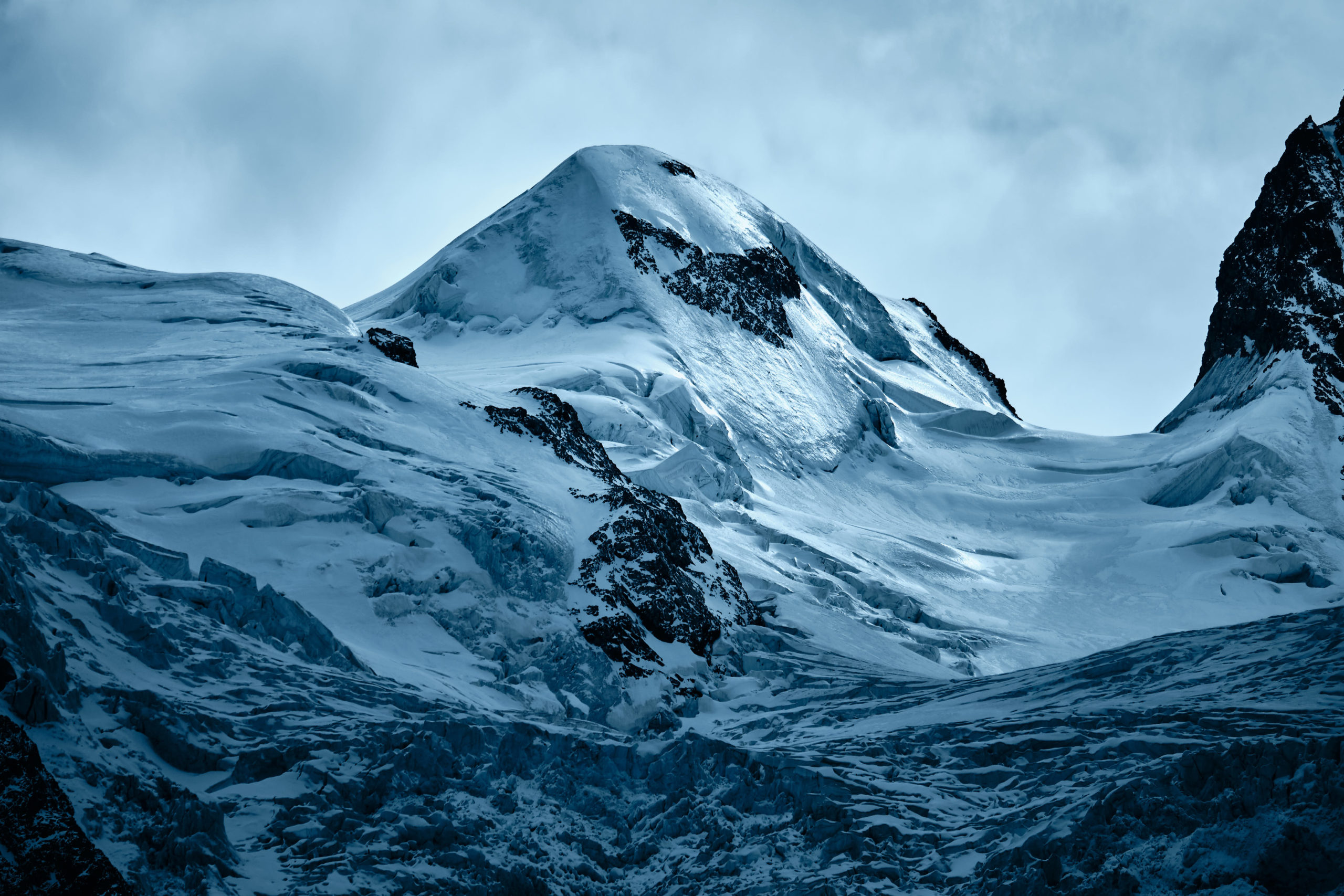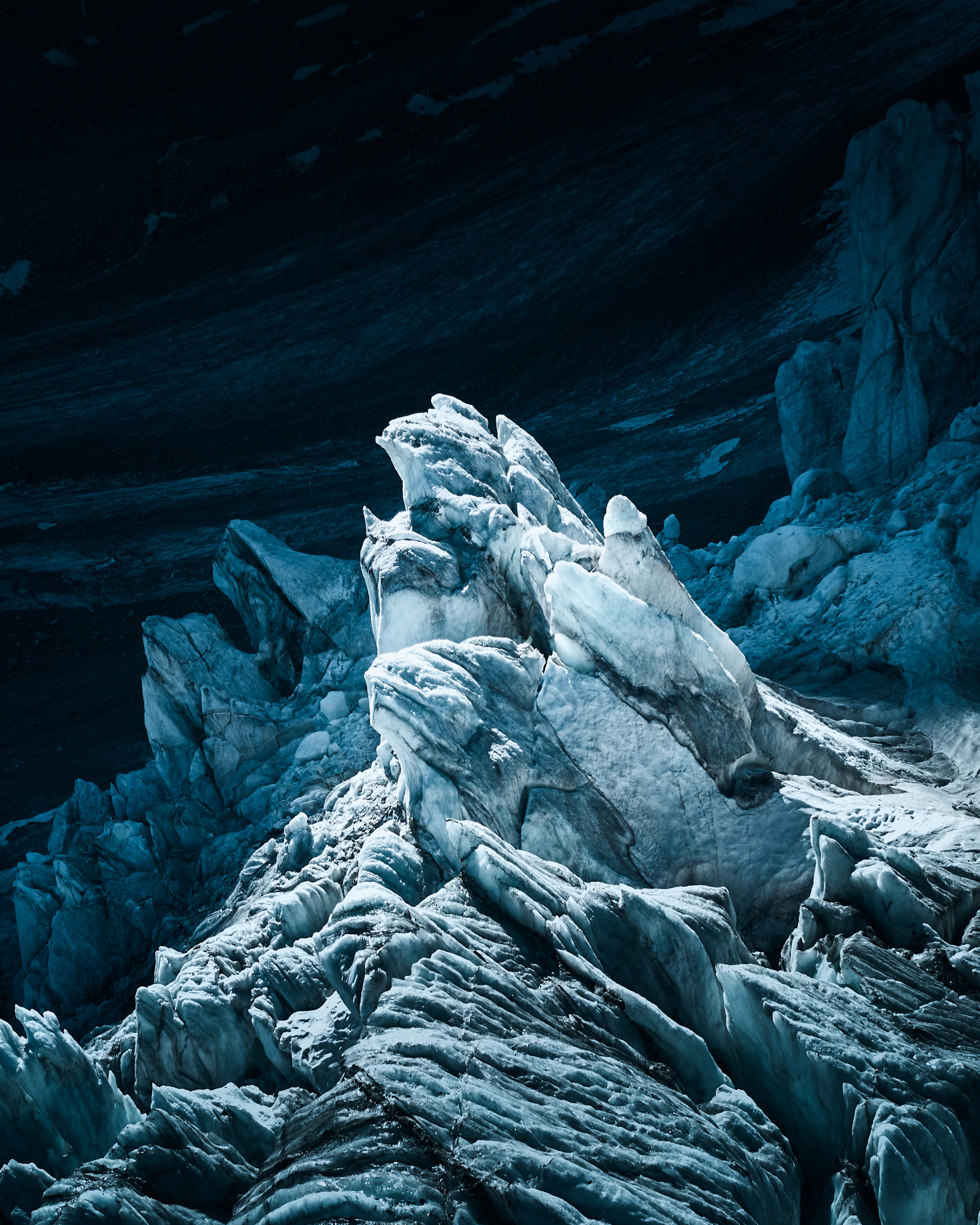

GRAUBÜNDEN, SWITZERLAND
The Morteratsch glacier
The Morteratsch glacier is the largest glacier in the Bernina chain in terms of area. The annual length change measurements have been recorded since 1878.¹ The figures show that the glacier has retreated by more than 3 kilometres in the last 60 years.
1
Length measurements from the Swiss Glacier Measurement Network have been available for the Morteratsch glacier since 1878. In addition, Johannes Oerlemans and his team have been making annual energy balance measurements on the glacier tongue since 1995.
Preserve the glaciers
According to model calculations²with a climate scenario of 0.022 °C temperature increase per year and a year-round snow-covered area of 0.8 km2 , it could be calculated that under today's conditions even glacier growth (length increase) would be possible in 10 years if 10% of the glacier area were covered with snow all year round.
A large amount of the glacier's meltwater could be collected at high altitude, recycled in the form of snow and thus returned to the glacier. This would require glacial meltwater, a jet pump, sufficient water pressure and sophisticated technology to produce snow without electricity.³
2
What happens when glaciers are covered with snow? This was a central question that the glaciologist Felix Keller from the Academia Engiadina in Samedan together with Hans Oerlemans from the University of Utrecht (NL) have been asking on behalf of the municipality of Pontresina since 2015. Numerous studies and field trials in the Upper Engadine followed, a computational feasibility study was conducted and scientifically published (Oerlemans et al., 2017).
3
NESSy ZeroE is the name of the groundbreaking and already patented development. It enables the climate-neutral and environmentally friendly production of protective snow.
The innovative snowmaking system is currently manufactured by two Swiss companies. Bartholet Maschinenbau AG is the world's leading manufacturer of ropeway systems. The company Bachler Top Track AG also holds a patent for the "Nessy" system, which enables snow production without electricity.
If enough snow can be produced through meltwater recycling to keep 10% of the Morteratsch glacier covered with snow in summer, the glacier would be protected from melting. Under today's climate conditions, the length would even increase again after 10 years. ¹
4
Grundlage dieser Arbeit war die weltweit längste Serie von Energiebilanzmessungen an einer Gletscherzunge (seit 1995), die vom Team um Johannes Oerlemans auf dem Morteratschgletscher gemessen wurde. Zusätzlich liegen Längenmessungen aus dem Schweizer Gletschermessnetz seit 1878 vor. Es konnte berechnet werden, dass unter den heutigen Bedingungen sogar ein Gletscherwachstum (Längenzuwachs) in 10 Jahren möglich wäre, wenn 10% der Gletscherfläche ganzjährig mit Schnee bedeckt wären.

